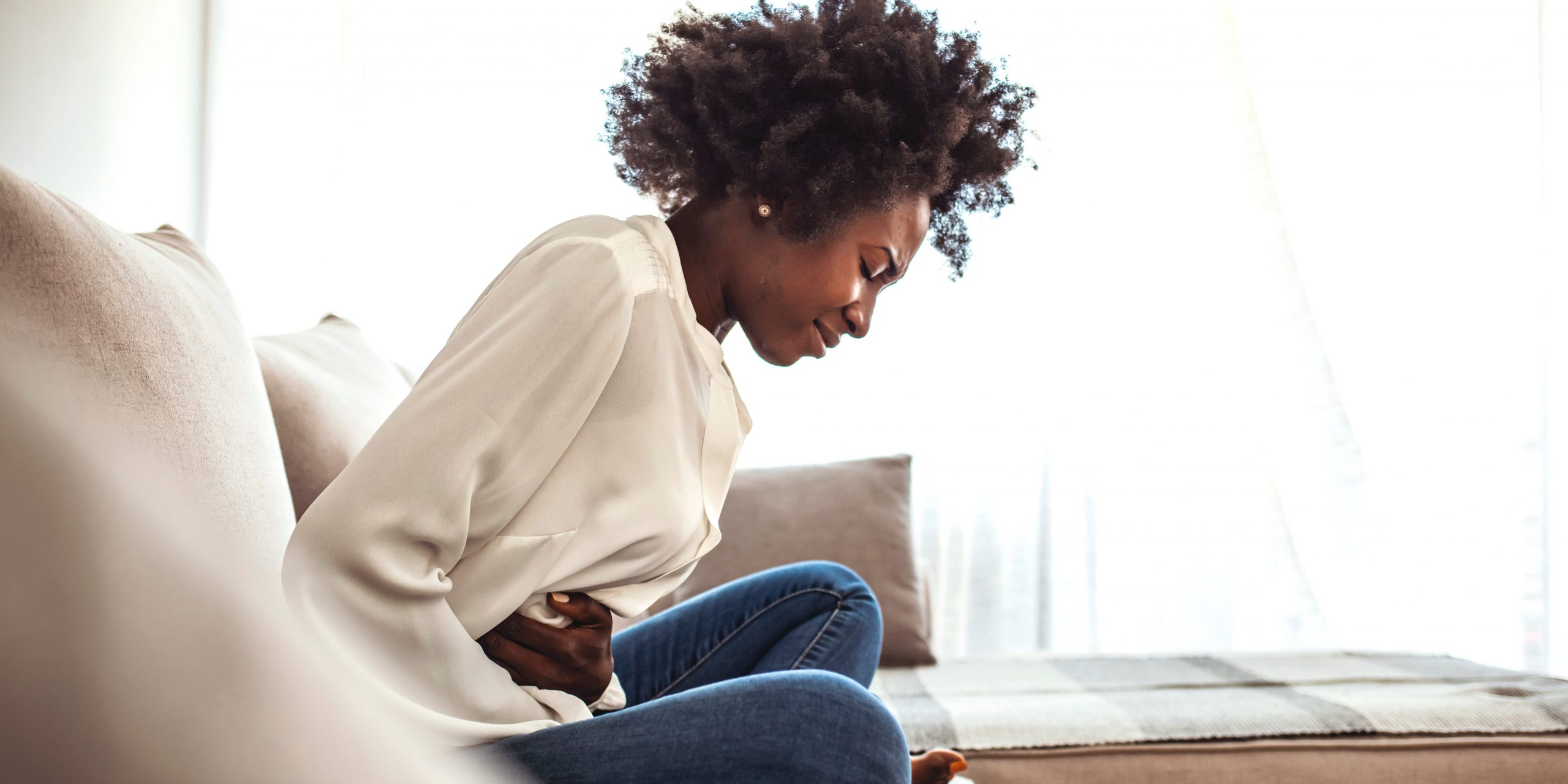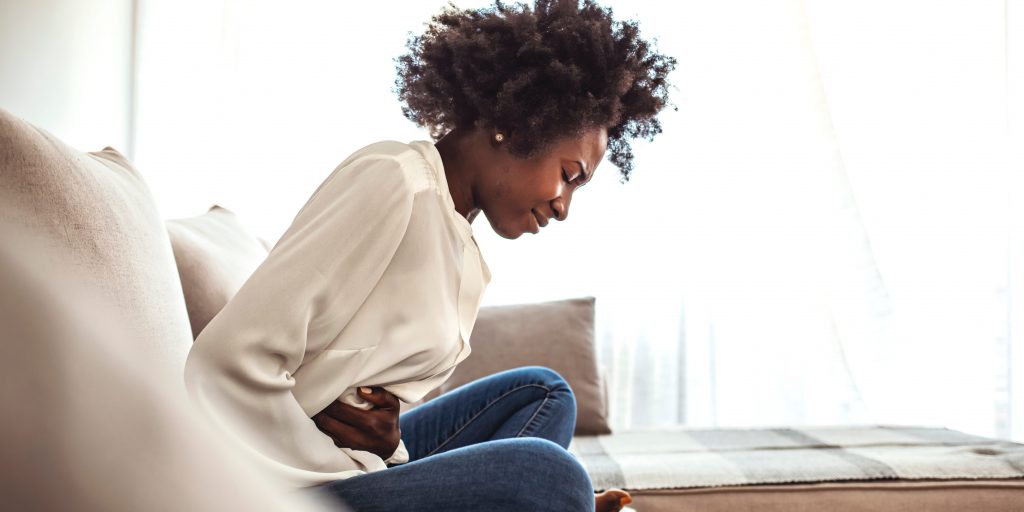
- Causes of pelvic pain can include STIs, cysts, endometriosis, and UTIs.
- Some conditions that cause pelvic pain may get worse if left untreated.
- Connect with your doctor to get help for severe, sudden, or ongoing pelvic pain.
- Visit Insider's Health Reference library for more advice.
Many people live with pelvic pain, which affects the lowest part of the abdomen between the belly button and the groin. The pain can range from mild to severe, and its intensity might fluctuate over time.
You can often treat minor pelvic pain at home with a heating pad, warm bath, or OTC medication like ibuprofen or acetaminophen.
However, "prolonged, chronic, and sharp pelvic pain, or random pelvic pain that can be debilitating, is not normal. It could indicate a serious underlying condition," says Thaïs Aliabadi, MD, an OB-GYN with her private practice Dr. Thaïs Aliabadi.
While pelvic pain can suggest sexually transmitted infections, endometriosis, or several other conditions, it doesn't always have a clear cause.
Pelvic pain can also be confused with different types of pain, including pain that affects your bowels or bladder.
Below, we'll cover eight common causes of acute and chronic pelvic pain, plus offer some guidance on when it's best to connect with your doctor.
1. Pelvic inflammatory disease and sexually transmitted infections
Pelvic inflammatory disease (PID) can cause pain in your pelvis or lower abdomen that comes on suddenly. Other symptoms of PID include:
- Fever
- Pain during sex
- Unusual vaginal discharge or bleeding
PID is typically caused by sexually transmitted infections (STIs) like gonorrhea or chlamydia that have gone unteated. PID can also develop if bacteria enter the reproductive tract after miscarriage, an abortion, or giving birth, or during your menstrual period, but this is less common.
How to treat it: The sooner you treat PID with broad-spectrum antibiotics, the greater chance you have of preventing complications, including infertility and chronic pain. These antibiotics require a prescription from a doctor or other prescribing clinician.
2. Endometriosis
Endometriosis, a chronic condition affecting the reproductive system that can make it difficult to become pregnant, is commonly associated with pelvic pain.
How to treat it: This condition can't be cured, but common treatments to mitigate the pain include:
- Nonsteroidal anti-inflammatory drugs (NSAIDs) such as ibuprofen
- Hormone therapy, including oral contraceptives to prevent ovulation and reduce menstrual flow
3. Ectopic pregnancy
An ectopic pregnancy occurs when an embryo implants and grows outside the uterus, often in a fallopian tube. Common symptoms include:
- Severe pain and pelvic cramps, typically on one side
- Nausea
- A missed period or light spotting only
- Vaginal bleeding
- Dizziness
How to treat it: An ectopic pregnancy is a medical emergency and requires immediate medical aid, since it can cause life-threatening bleeding if left untreated. Treatment options for ectopic pregnancy include medication and/or surgery.
4. Ovarian cysts
Twisted or ruptured ovarian cysts can also cause significant pelvic pain that typically occurs on one side. The pain can be sharp or dull and may only occur during vaginal intercourse.
While ovarian cysts are generally harmless, a ruptured cyst can cause:
- Sudden and severe pelvic pain
- Weakness
- Rapid breathing
- Fever
A cyst may also lead to a twisted ovary, which can cause similar symptoms.
How to treat it: If you suspect you have a twisted ovary or ruptured cyst, connect with your doctor as soon as possible. Your doctor can recommend tests, like an ultrasound, to help diagnose a cyst, plus offer guidance on treatment options.
5. Urinary tract infections
UTIs can develop when bacteria enter the urinary tract through the urethra and multiply in the bladder.
Along with pain or pressure in the pelvic area, a UTI might also cause the following symptoms:
- A persistent urge to urinate
- Trouble urinating
- A burning sensation during urination
- Blood in your urine
How to treat it: While some UTIs are safe to treat at home, prescription antibiotics are generally the first line of treatment. Once you start treatment, pelvic pain and other symptoms often clear up within a few days.
6. Uterine fibroids
While uterine fibroids don't always cause pain or noticeable symptoms, they can sometimes trigger:
- Discomfort in the pelvis or low back
- Pain during vaginal intercourse
- Heavy periods with severe cramping
- Pressure or a feeling of heaviness in your bladder
How to treat it: Fibroids that cause no symptoms may not need treatment, but if you're experiencing a lot of discomfort, your doctor might recommend the following treatments:
- Medication, including gonadotropin-releasing hormone (GnRH) agonists
- Birth control pills or an IUD
- Surgery to remove fibroids
7. Pelvic girdle pain from pregnancy
Pregnancy can sometimes cause pelvic pain and increase your risk of pelvic floor dysfunction, which could lead to painful vaginal sex and incontinence.
"Pelvic girdle pain is a subset of pelvic pain that more commonly comes on in a first pregnancy in the late second or third trimester. If this was an issue in previous pregnancies, it's likely to come on much earlier in subsequent pregnancies if not addressed — as early as the first trimester," says Heather Jeffcoat, doctor of physical therapy and President-Elect of the Academy of Pelvic Health Physical Therapy.
How to treat it: Many pregnant people experience mild pelvic discomfort from the growing uterus and stretching of the round ligaments. This typically doesn't require medical treatment but you may be able to mitigate the pain with the following:
- Manual therapy from a chiropractor or physiotherapist
- Core stabilizing exercises, which can help strengthen hips, stomach, and back muscles along with pelvic floor muscles
- Exercising in water
8. Gastrointestinal conditions
Your pelvic floor muscles play a key role in bowel function. And if bowel function is disrupted from gastrointestinal conditions like constipation, irritable bowel syndrome, ulcerative colitis, and Crohn's disease, it can trigger cramps and pain in the lower abdomen or pelvic area.
How to treat it: Treatment really depends on your underlying condition. If it's just a bout of constipation, consider your diet over the next few days and opt for foods that help ease constipation like prunes and whole grains.
If you're experiencing additional symptoms like diarrhea, bloody stool, and unexplained weight loss, then you may have Crohn's disease or another underlying condition. Keep a log of all your symptoms and when they typically occur — for example, after eating or first thing in the morning.
Depending on the underlying condition and severity of your symptoms, a doctor may recommend medication or surgery.
9. Cancer
Persistent pelvic and back pain, along with vaginal bleeding and discharge, can also be early signs of gynecological cancers.
Gynecological cancers include:
- Cervical cancer
- Ovarian cancer
- Uterine cancer
- Vaginal cancer
- Vulvar cancer
Gynecologic cancer often runs in families. If you have a family history of cancer, plus unusual vaginal bleeding and discharge, it's best to connect with your doctor as soon as possible to discuss best treatment options.
How to treat it:
- Surgery
- Radiation therapy
- Immunotherapy
- Chemotherapy
When to connect with your doctor
Many conditions that cause pelvic pain can get worse without treatment. So, it's essential to get medical attention for serious pelvic pain that doesn't improve in a day or so, or has additional symptoms including:
- Fever
- Dizziness or weakness
- Severe or chronic nausea
- Abnormal vaginal bleeding or discharge
- Severe or chronic itching or burning in the genital area
- Severe pain on one side of your abdomen
Your doctor can use a number of tests to help identify the source of pelvic pain.
After ruling out pregnancy, ectopic pregnancy, and major illnesses like appendicitis, they might recommend:
- Blood or urine tests
- Ultrasound
- Laparoscopy
- A culture of cervical cells to rule out STIs
- X-ray
- A CT scan or MRI
- Colonoscopy
- Sigmoidoscopy
It's always wise to schedule an appointment with your regular doctor or clinician for pain that doesn't improve within several days. They can offer referrals to specialists, like gynecologists, gastroenterologists, and physical therapists, if needed.
In some cases, your care team may not be able to identify what's causing your pain right away. They might recommend pelvic floor physical therapy, or additional testing to determine the cause of chronic pelvic pain.
Insider's takeaway
Pelvic pain can have a range of causes, from a medical emergency like an ectopic pregnancy to something less severe like an ovarian cyst.
If the pain is severe, comes on suddenly, or doesn't improve within a day or so, contact your doctor immediately. Also, watch out for other symptoms to help you figure out the possible cause.
Your doctor can help you identify the underlying cause and explore treatment options for pain relief.
